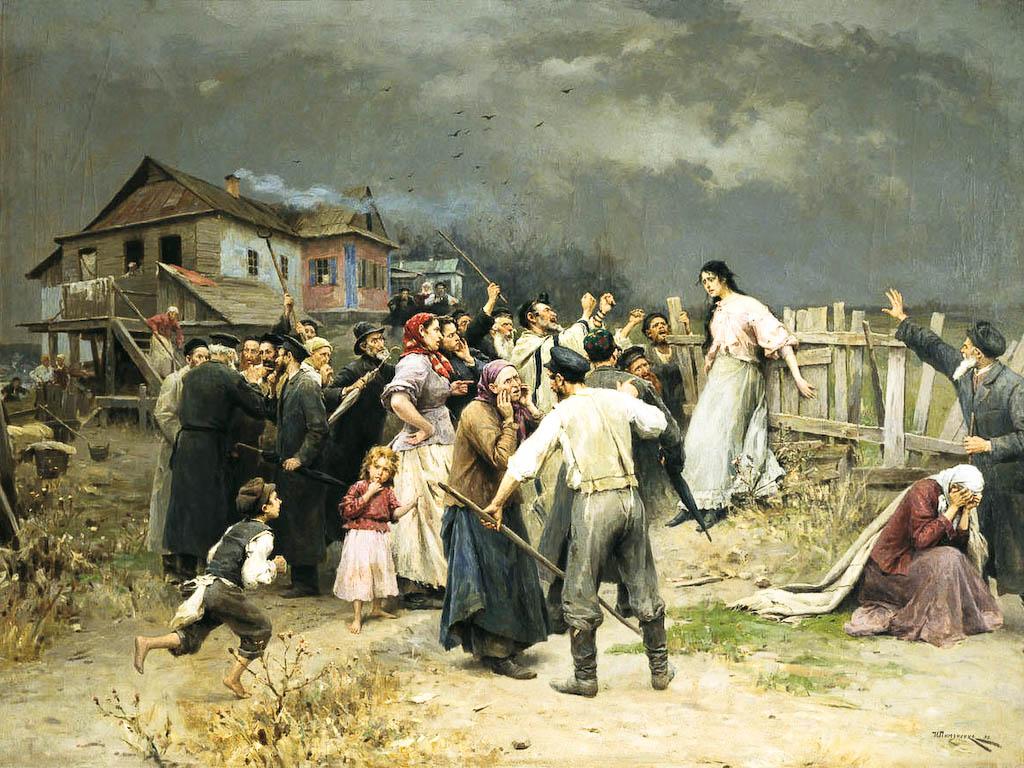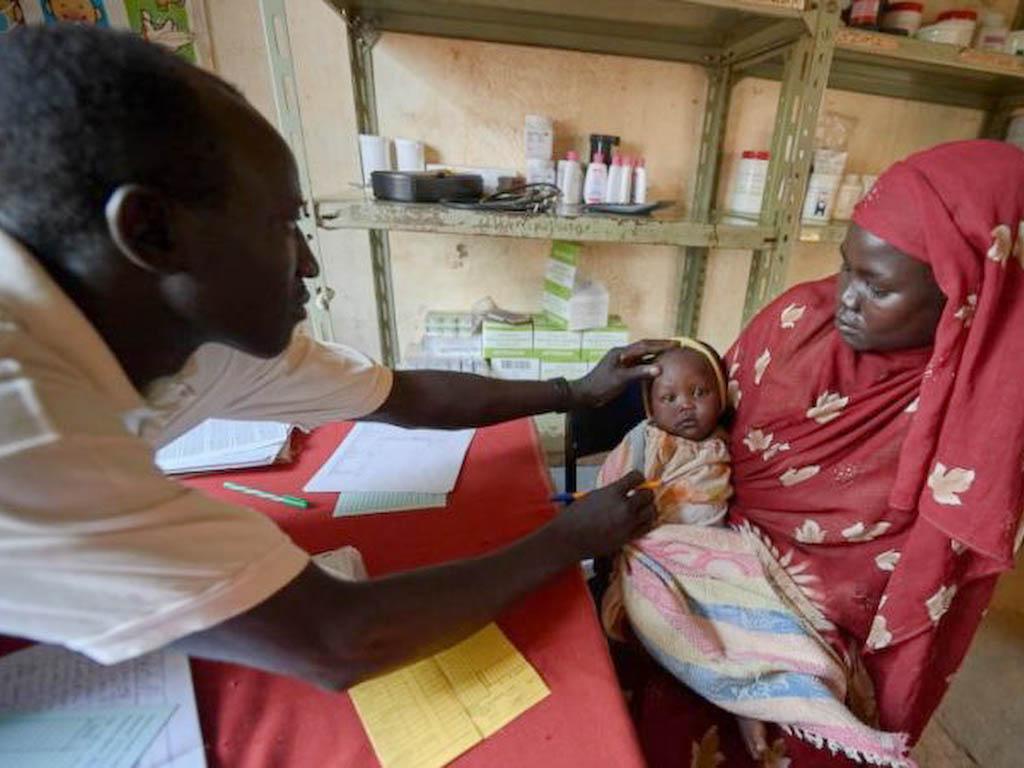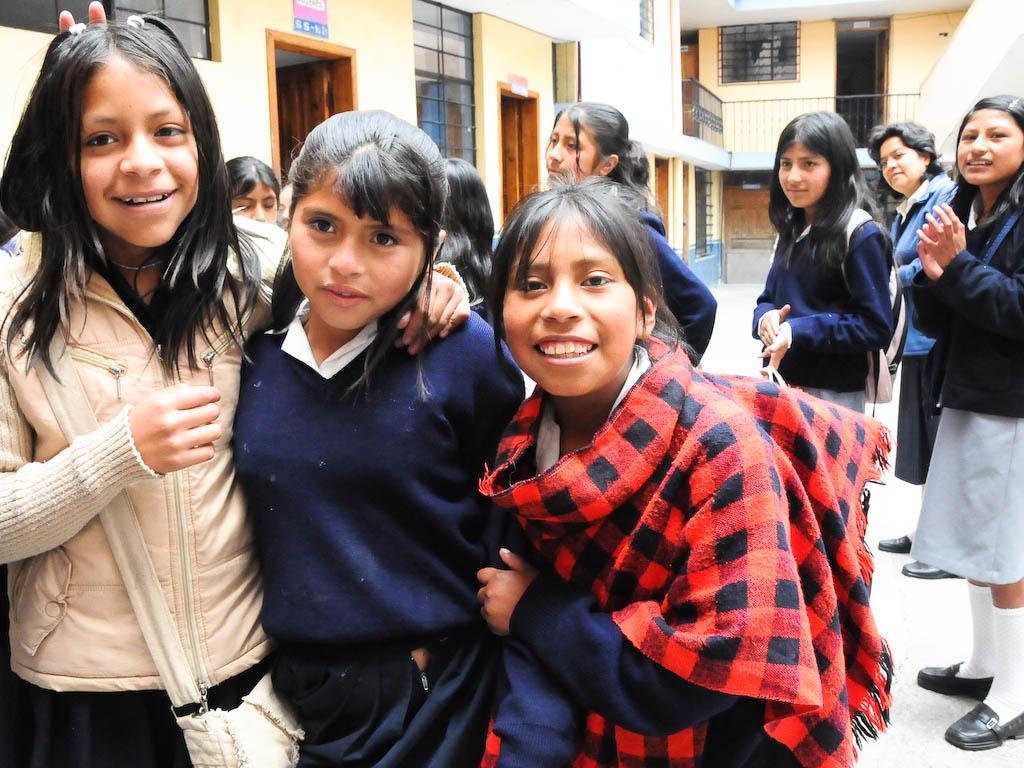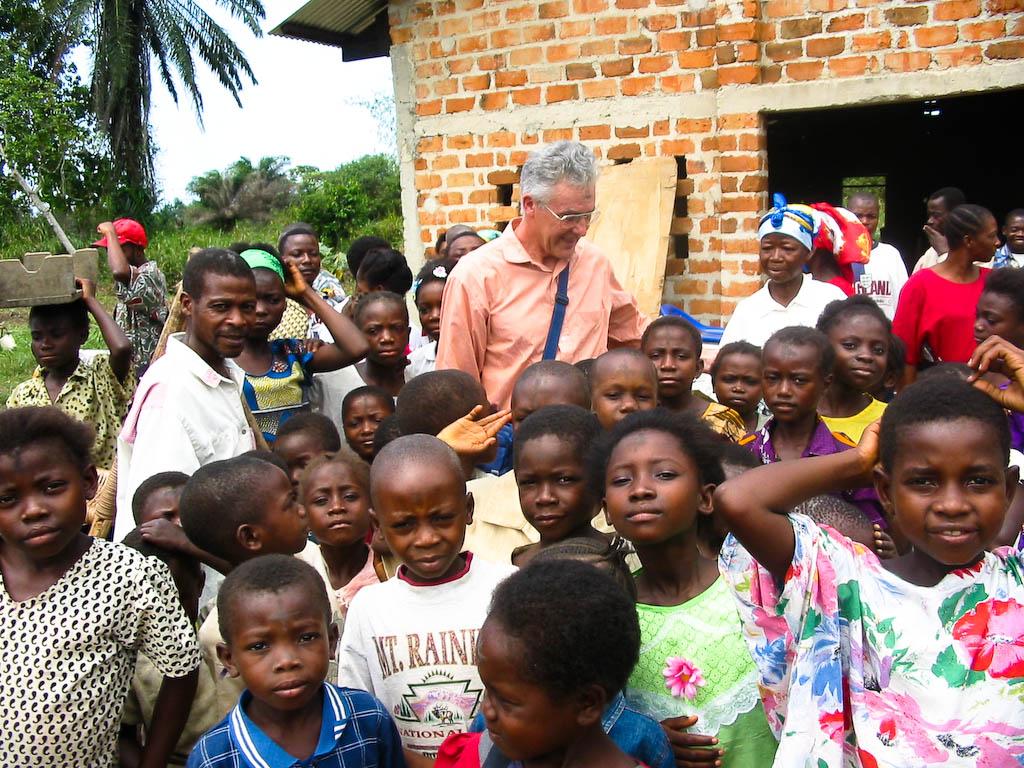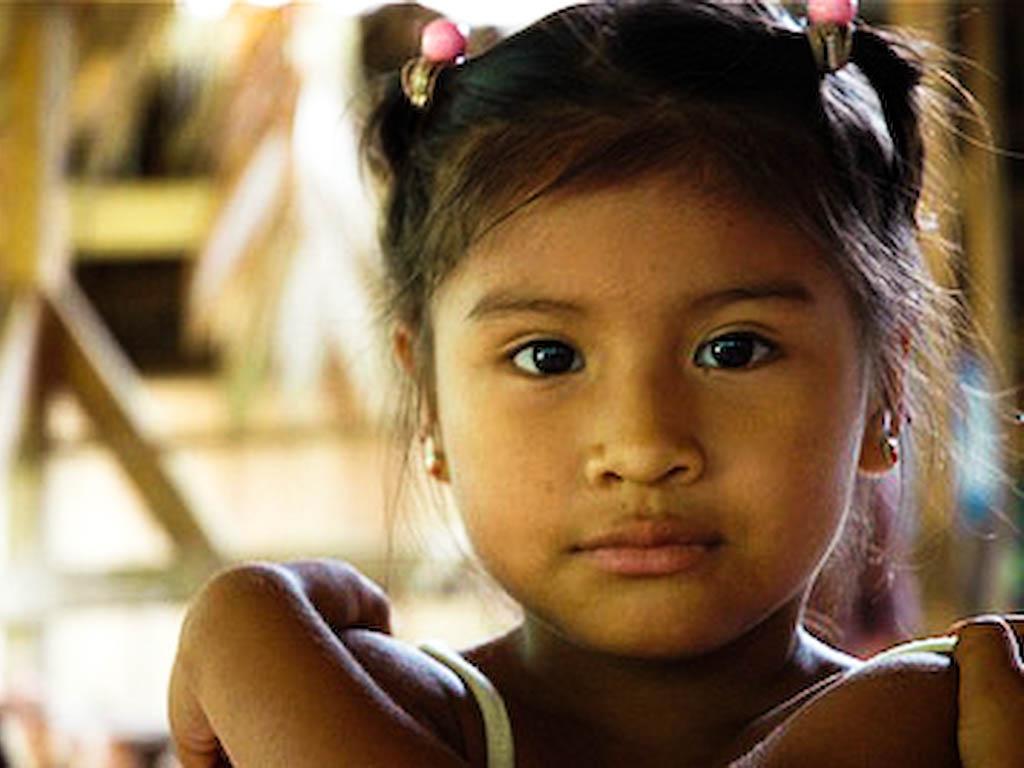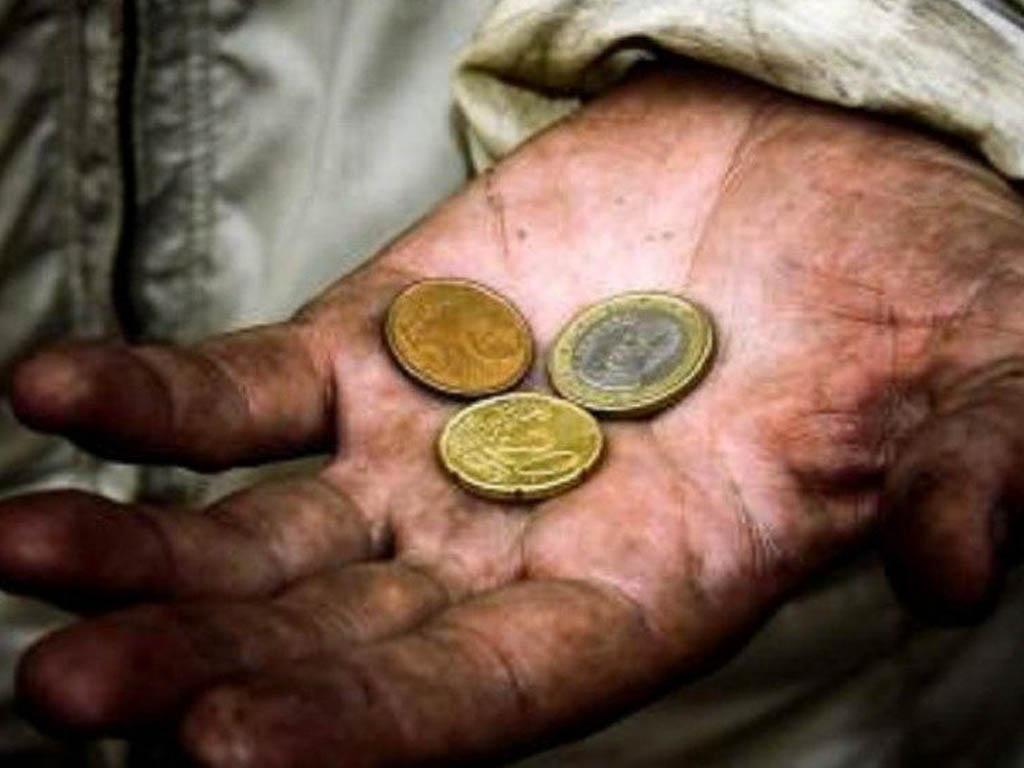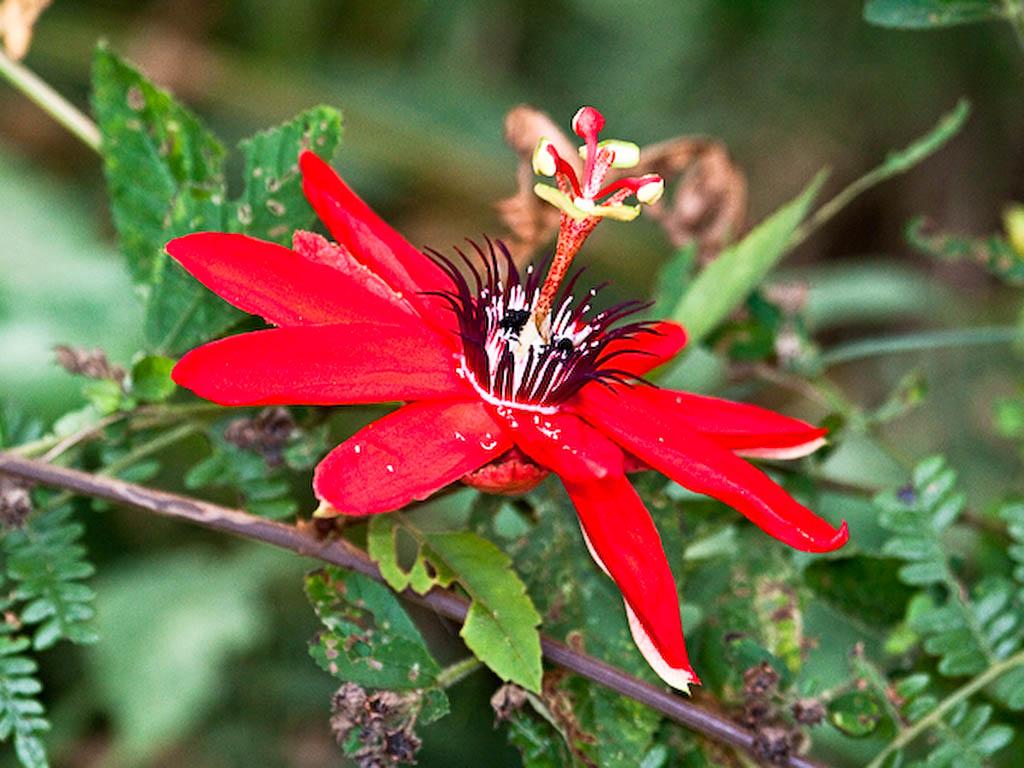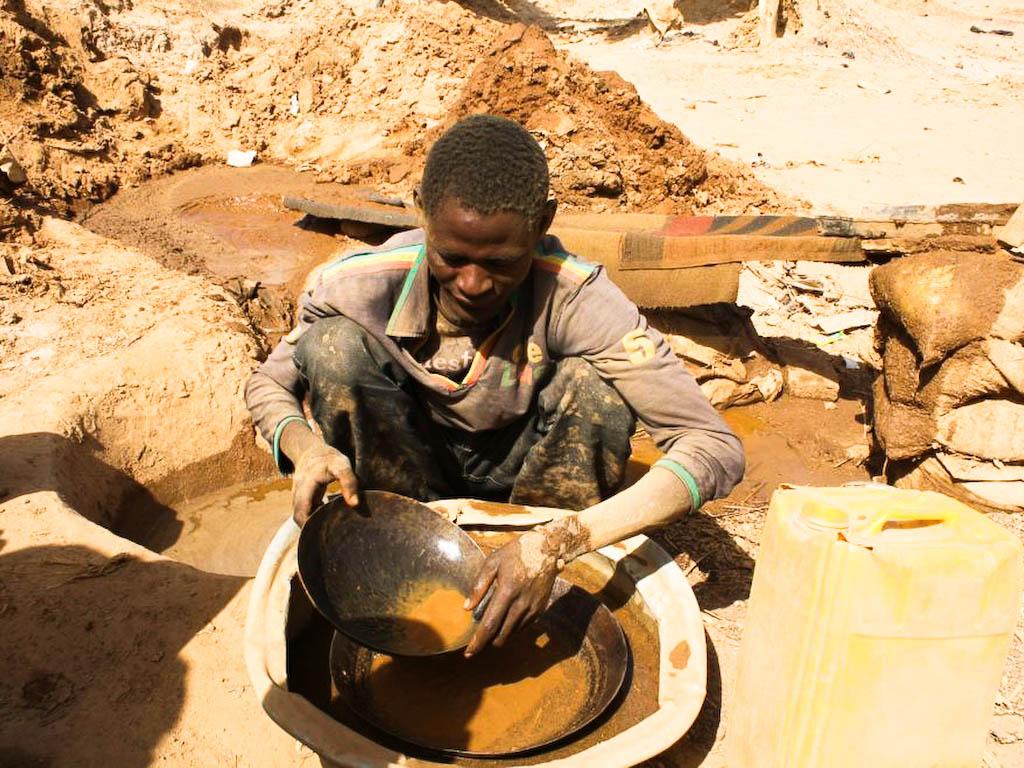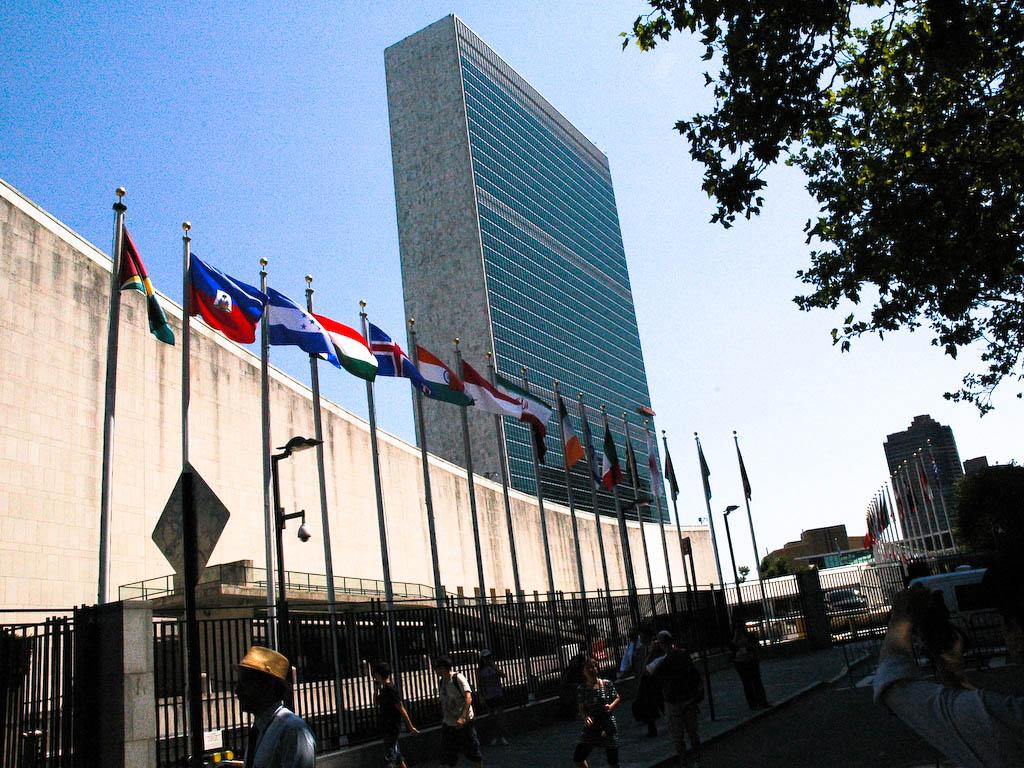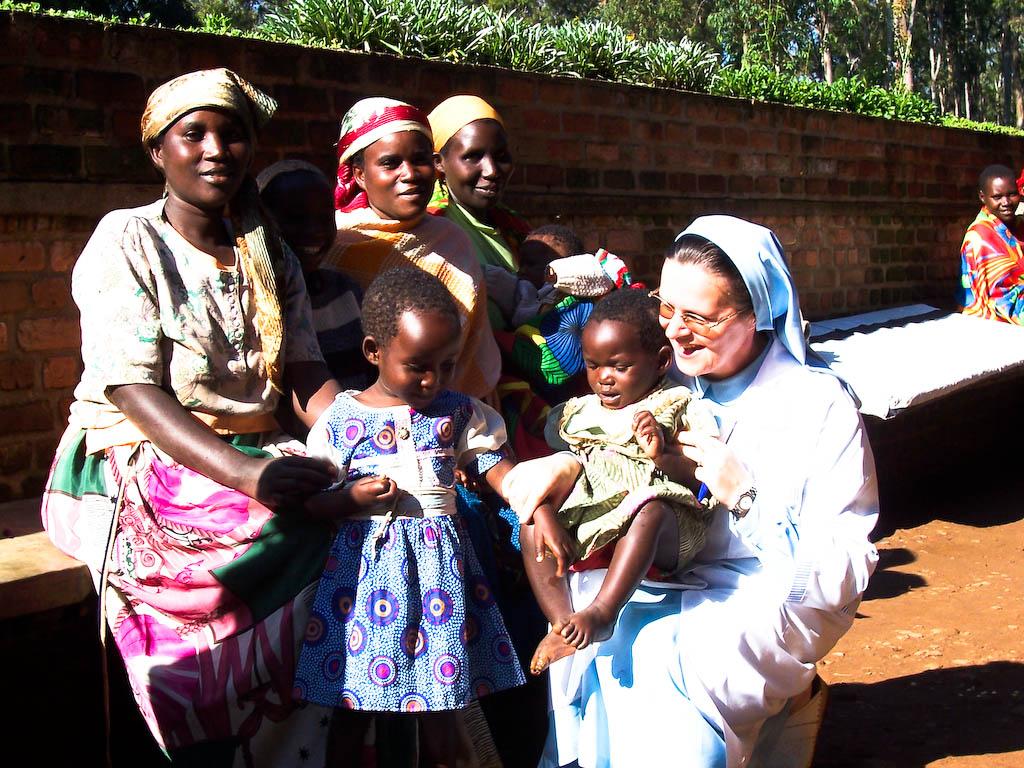Jpic News from John Paul Blog - Vol. 7 - N 2
|
THE NEWS OF THE MONTH
True radicalism, does not lead to fanaticism"I will not surprise anyone by saying that we are going through a period where fanaticism, both religious and political, seems to be gaining ground. It also animates in an omnipresent way the current media landscape. Terrorism, the rise of extremes, withdrawal of identity, discriminating behavior for ethnic, religious or sexual reasons make up the news of our last months." With these words, Joseph Gotte opens his article in Réflexions: Le véritable radicalisme, l’unique réponse au fanatisme (The true radicalism, the only answer to fanaticism). It is easy to confuse emotion and passion with fanaticism. We can live with emotion and passion without going down the road to fanaticism. "Fanaticism generates reactions that lead to disqualify others, condemning those who are not like us, criticizing and rejecting those who do not share the same ideas, to the point of building insurmountable walls." We can have clear ideas, know well in what we believe, what we want and want what we desire, know clearly where we go and where we come from, distinguish what we must do to live well and to love well, without falling into the fanaticism that leads to being inflexible, categorical, extremist. The antidote is "to practice tolerance, to be receptive, to open up to others, to accept those who think differently or do not share the same points of view. To be ready to live with the other, with the stranger, with the one who is different, without renouncing one’s own ideas, convictions, and values. To know how to tolerate, to accept, to love, to integrate, to listen, is a long way that leads to the construction of bridges and not walls, it is the way out of these extremes that can make us fanatic" (¿Radicalismo o Fanatismo?). Go on reading | |
|
THE GOOD NEWS
Christians, Muslims live together peacefully in Nuba MountainsWhile tense relations between religious groups contribute to violence in many parts of the world today, Christians and Muslims in the war-ravaged Nuba Mountains of Sudan say they are getting along just fine. For outsiders, it takes a while to comprehend. “When I first arrived in the Nuba Mountains, I was confused. Everyone dressed the same. Women would wear head coverings, but then I saw them in church receiving the sacraments,” said Comboni Sister Angelina Nyakuru, who serves as head nurse at the Catholic Church-sponsored Mother of Mercy Hospital in Gidel. | |
|
THE WORST NEWS
Forced child pregnancy in Latin AmericaThe Latin American and Caribbean Committee for the Defense of Women's Rights (Cladem), following a regional survey, has published data showing an unrecognized reality of the Latin America - Caribbean region: forced pregnancies in girls. These results should promote response actions at the national, regional and international levels. The 2016 study collects data from 14 countries: Argentina, Bolivia, Brazil, Colombia, El Salvador, Honduras, Mexico, Nicaragua, Panama, Dominican Republic, Paraguay, Peru and Puerto Rico (See Niñas Madres. Embarazo y maternidad infantil forzada en América Latina y el Caribe). | |
|
CELEBRATING!
Justice, Peace, and Integrity of Creation. Companion in MissionIn its special jubilee year of our 200th anniversary of foundation, the Missionary Oblates of Mary Immaculate (OMI) gifted itself with this manual, fruit of two years of work, to review and update the 1997 JPIC OMI Vade Mecum, with important contributions from Pope Francis Justice, Peace and Integrity of Creation (JPIC) Ministry is central and at the heart of today's mission is the missionaries' way of life and forms an integral part of our process of Evangelization. We live in a world today that is characterized by rapid changes, both positive and negative. While there are exciting possibilities in our reality today, there are also many destructive elements. JPIC ministry begins with seeing, to ‘really see’—to have a truthful and deeper look at, to take a contemplative stance and a prophetic reading, to be able to discern in light of the values of the Gospel— what is happening in our world today, our common home. JPIC ministry assists us in analyzing the current reality with a contemplative perspective, to see more deeply the structures that generate poverty, devastation of the environment, conflict and violence, and how we might more fully make the values of the Kingdom more visible and functional. This is the reality and the world in which as missionaries we live and minister to the people: Through the eyes of the Crucified Savior, we see the world rescued by his blood, with the desire that the men in whom he continues his passion also know the strength of his resurrection (It is the perspective and approach of Saint Eugene de Mazenod). Many throughout the world work with, between and for the poor, thus exercising this ministry, even when they do not use the terminology of JPIC. Therefore, this handbook OMI JPIC Companion in Mission is intended to be a help for all Missionary and associates as they seek and strive to integrate into their ministry this vital aspect of the “liberating presence of Jesus Christ and the new world born in his resurrection”. As Pope Francis states, the deterioration of the environment and of society affects the most vulnerable people on the planet, the poorest and the excluded, who are the majority of the planet’s population, and who are often treated in international discussions as an afterthought or as collateral damage. He notes that a true ecological approach always becomes a social approach; it must integrate questions of justice in debates on the environment, so as to hear both the cry of the earth and the cry of the poor (cf. LS, 48-49). May Mary strengthen and inspire us, as she herself is a woman of justice who sang of the new world of God’s kingdom where the poor would be given their fill and find freedom as sons and daughters of God. Click here to read and download the handbook | |
|
TAKE ACTION NOW!
The Bribris of Costa Rica: Preventing Escalation of Violence and Achieving JusticeThe Bribris are a native people of about 11,500 in total, established in Costa Rica for centuries, some think for 5,000 years. They live on the Indian reserves of Salitre and Cabagra and speak the only indigenous language of Costa Rica taught at the university. They practice a form of religion related to shamanism and their beliefs are based on the worship of Sibú, "God the Father", creator of the Earth and Man, and the god of culture, as he teaches which products to eat and how to plant them. Their habitat consists of wooden houses on stilts, covered with dried palms. Their main characteristic is certainly a spirit of independence and resilience. They live very far away from other human groups and move by boats and rafts on the Sixaola River on the border with Panama. They produce handicrafts, baskets and musical instruments found throughout the country. Hunting remains their main activity, but they respect strict rules of consumption. When hunting a quetzal or a scarlet macaw, for example, only the elderly can eat it. Their agriculture is traditional and devoted to bananas, maize and some tubers; but cocoa is their key element. It is used for therapeutic purposes, body cleansing and as a staple food. Women, men, shamans, young or old, all know the recipes, know how to cultivate it and use it wisely. The Costa Rica law prohibits non-natives from entering, staying and possessing indigenous peoples' lands (Law 6172 of 1977). However, Bribris Indigenous People are now violently deprived of their Ancestral Land. On the days of 25-26 December, they were subjected to violence and threats on their territory of Salitre by a group of non-native gunmen who set fire to their houses and properties, forcing them to flee to the mountains. The usurpers keep sending out threats not to return to their houses and to leave their properties. These cases of violence have been occurring for six years during the Christmas holidays. The Inter-American Commission on Human Rights (IACHR) has stated that preventive measures must be taken (MC-321-12 IACHR) and ordered the State of Costa Rica to protect them. The Office of the Presidency of the Country informed the National Committee for Support to Indigenous Autonomy, and issued orders and instructions to prevent further violence and arrest the perpetrators. But, to date, none of the attackers has been arrested. The police are alleged to be hand in glove with the usurpers and are slow to act, and, while tensions in the lands of the community of Río Azul continue, there is no permanent presence of the Public Forces to ensure peace and security. Peaceful as they are, the Bribris decided to expel the usurpers and recover their land. There is, therefore, a chance that more violence will erupt. Advocacy aims policies and change, awareness and knowledge about bringing people with authority to take positions on issues of common interest, especially for the benefit of the marginalized and excluded from the political process; and the international community is called upon to intervene when a state does not assume its responsibility to defend its citizens and keep social peace. We saw the typical case with Asia Bibi, a Christian woman sentenced to death in November 2010, accused of blasphemy against Islam. International pressure has secured her being released and found innocent of a crime she did not commit even though her case is not yet fully resolved. For native Bribris, what can be done? An initiative has been launched to bring the international community to ask the Government of Costa Rica to act preventing further damage, to protect and promote all human rights for the natives. The initiative is to send an e-mail to the Costa Rican Embassy of our own country and / or neighboring countries on this subject. At this link are the addresses of the Embassy: https://www.costarica.com/embassy/. Sample letter: “Respected Ambassador of Costa Rica, We draw your attention to the assault on the indigenous Bribris people. It is alleged that on December 25, 2018, the non-indigenous people have assaulted the Bribris in Salitre Indigenous Territory with fire arms; set their house on fire and the families have fled to the mountains. This happens despite the presence of the law that forbids the non-indigenous people to enter, to remain and to possess the land of the indigenous people by Indigenous Law ( Law 6172 of 1977) and The Inter-American Commission on Human Rights(IACHR) that warrants Precautionary Measures (MC-321-12 CIDH). | |
|
KNOWING THE SDGs
Goal 1: End poverty in all its forms everywhereWhile global poverty rates have been cut by more than half since 2000, one in ten people in developing regions are still living with their families on less than the international poverty line of US.90 a day, and there are millions more who make little more than this daily amount. Significant progress has been made in many countries within Eastern and Southeastern Asia, but up to 42% of the population in Sub-Saharan Africa continues to live below the poverty line. This rate is expected to increase in the next few years, due to the appearance of new threats such as climate change, terrorism, food insecurity and conflicts. Furthermore poverty is more than the lack of income and resources to ensure a sustainable livelihood. Its manifestations include hunger and malnutrition, limited access to education and other basic services, social discrimination and exclusion as well as the lack of participation in decision-making. Economic growth must be inclusive to provide sustainable jobs and promote equality. Goal 1 is, therefore, an ambitious commitment to eradicate poverty in all its forms and dimensions. It involves reaching, by 2030, the following targets: - to completely eradicate extreme poverty worldwide, which is defined as if one lives on less than $ 1.25 a day; - to halve at least the proportion of men, women and children of all ages living in poverty as defined by each country; - to put in place social protection systems needed to help alleviate the suffering of disaster-prone countries and provide support in the face of great economic risks and measures for all, adapted to the national context; - to ensure that all men and women, especially the poor and the vulnerable, have equal rights to economic resources and access to basic services, land ownership and control, and other forms of ownership, inheritance and natural resources and new technologies and adequate financial services, including microfinance; - to strengthen the resilience of the poor and vulnerable people and reduce their exposure and vulnerability to extreme weather events and other economic, social or environmental shocks and disasters; - to ensure a high level of resource mobilization, including through enhanced development cooperation, to provide developing and especially least-developed countries with adequate and predictable means to implement programs and policies aimed at ending poverty in all its forms; - to establish viable national, regional and international policy principles, based on pro-poor and gender-responsive development strategies, to accelerate investment in sustainable development measures; elimination of poverty. Go on reading | |
|
KEEP HOPING
Every day, listen to a flower, she will speak to you"You will find in the forests more than in the books. The trees and the rocks will teach you what no teacher could ever tell you "(Bernard of Clairvaux). Listen to the flowers: you can remain in silence or sing, marvel or contemplate, inspire or create and recreate, always respect and no need of studying or just what is necessary, do not act but protect. "Praise be, my Lord," sung St. Francis of Assisi in his beautiful song: "Praised are you for sister our mother the earth, who supports us and governs us, and produces various fruits with the colorful flowers and the grass". He entered into communication with all creation, and even preached to the flowers, "inviting them to praise the Lord, as if they were endowed with reason." His reaction was much more than an intellectual valorization or an economic calculation, because for him, any creature was a sister, united to him by bonds of affection. That's why he felt called to protect everything that existed. "Considering that all things have a common origin," said of him Saint Bonaventure, "he felt himself filled with even greater tenderness, and he called creatures, no matter how small, with the name of brother or sister." "Every creature has its own goodness and perfection. The different creatures, desired in their own right, reflect, each in its own way, a ray of the infinite wisdom and goodness of God. This is why humankind must respect the goodness of each creature to avoid a disorderly use of things. Francis asked that the convent always leave a part of the garden without cultivating it, so that it grows wild herbs and those who admire them can raise their thoughts to God, author of so much beauty. The world is more than a problem to solve, it is a joyful mystery that we contemplate in joy and in praise. This is what the song that accompanies the images of this video invites us to do. Listen to a flower | |
|
WORTH THINKING ON
In the Bowels of Burkina Faso, the chest of African GoldAt 150 meters’ depth and in temperatures of 50 degrees C, men, women and children dig for ten hours a day to find precious metal with the risk of collapses, highly toxic fumes and close contact with mercury and cyanide. It is the gold craft mine of Sougou, in the province of Zoundwéogo. Throughout history, no other mineral was more valued than gold. About 5,000 years ago, man began to use it in various fields: commercial, medical, financial, etc. Since then, many civilizations were born, grew and disappeared for what is called “gold rush”. Africa is the continent where most of the mining companies are concentrated in the exploitation of gold resources. Burkina Faso is undoubtedly one of the main chests of African gold, where it is the first export product. It provides 20% of its GDP (Gross Domestic Product) and the economy of the country largely depends on the price of this mineral on the international market. Burkina Faso, which literally means the land of the just, as its former president Thomas Sankara renamed it, is one of the poorest countries in the world. A land where people are still dying from hunger, thirst, and malaria. A society where AIDS has infected more than 20% of the population, where infibulation (FGM) is tacitly practiced and government corruption is flourishing. A country where the pan African dream of Sankara has been strangled by multinationals and by government corruption. A country where you decide as you please, not only on the riches but also and above all on the lives of the people; where the dignity, the respect and the beauty of men, women and children are violated every day. Gold exploitation is, for Burkina Faso, one of the main economic activities, to the detriment of agriculture which most of the local population still depend on. Those are the ones mostly affected by the “gold rush”, because of its disastrous consequences to the environmental and human fields. Go on reading | |
|
RESOURCES
Is it Time to End Cheque Book Diplomacy at the UN?The UN’s major donors – led by the United States – have long been accused of influence-peddling and misusing their financial clout not only to grab some of the high ranking jobs in the world body but also threaten funding cuts to push their own domestic agendas. The Palme proposal did not renounce the existing “capacity to pay” formula, but suggested there should be a cap of 10 percent maximum for any one country. This cap is intended to reduce the UN’s excessive dependence on funding by the US and a fistful of big donors. The spirit of the Palme proposal is to protect the UN from being unduly influenced by these donors. According to the current formula, besides the 22% by the US, the percentage for the other major contributors include: Japan pays 9.7 %, China 7.9%, Germany 6.4%, France 4.9 %, UK 4.5%, Italy 3.7% and Russia 3.1%. The poorest countries of the world pay 0.001% of the UN budget, whereas the Least Developed Countries (LDCs), described as the poorest of the poor, have a cap of 0.01% each Kul Gautam, former UN Assistant Secretary-General and Deputy Executive Director of the UN children’s agency UNICEF, is a strong advocate of the Palme proposal and argues that if UN decision-making is to be freed from excessive vulnerability to, and even being blackmailed by the big donors, it is important for the UN not to be too dependent on any single donor for its overall budget or important projects. In an interview with IPS, he pointed out that former Secretary-General Ban Ki-Moon was compelled to change his report on Saudi Arabia’s blatant targeting of children and civilians in its attacks in Yemen a few years ago, because of the Saudi threat of withholding its funding for the UN. Similarly, in 2005, former Secretary-General Kofi Annan was compelled by then US President George W Bush to appoint an American Executive Director of UNICEF within 72 hours —without any serious vetting by the UNICEF Executive Board. A clear case of influence-peddling, and “cheque book diplomacy,” said Gautam, author of the recently-released book titled “Global Citizen from Gulmi: My Journey from the Hills of Nepal to the Halls of the United Nations”. James Paul, who served as executive director of the New York-based Global Policy Forum (1993-2012), says Olaf Palme made his proposal for one great reason: “A more even distribution of the assessed contributions would better reflect the fact that this Organization is the instrument of all nations.” Go on reading | |
|
WITNESSING
Love for the People and passion for the GospelIn 2018, 40 missionaries were killed in the world, 17 more, almost double, compared to 23 in 2017. Among them 35 were priests, one seminarian and four lay people. After eight consecutive years in which the highest number of missionaries killed was in America, in 2018 Africa had the primacy of the bloodshed: 19 priests, a seminarian and a lay woman. |

- Office P.O. Box 138 - Montclair NJ 07042 0138 US
- Please share your suggestions, opinions, doubts and ideas writing to pezzijp@jpic-jp.org
- You can subscribe also by writing to webmaster@jpic-jp.org
- For all back issues www.combonimissionaries.org - www.comboni.org
- Copyright © www.jpic-jp.org

